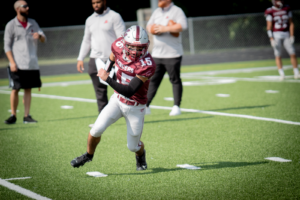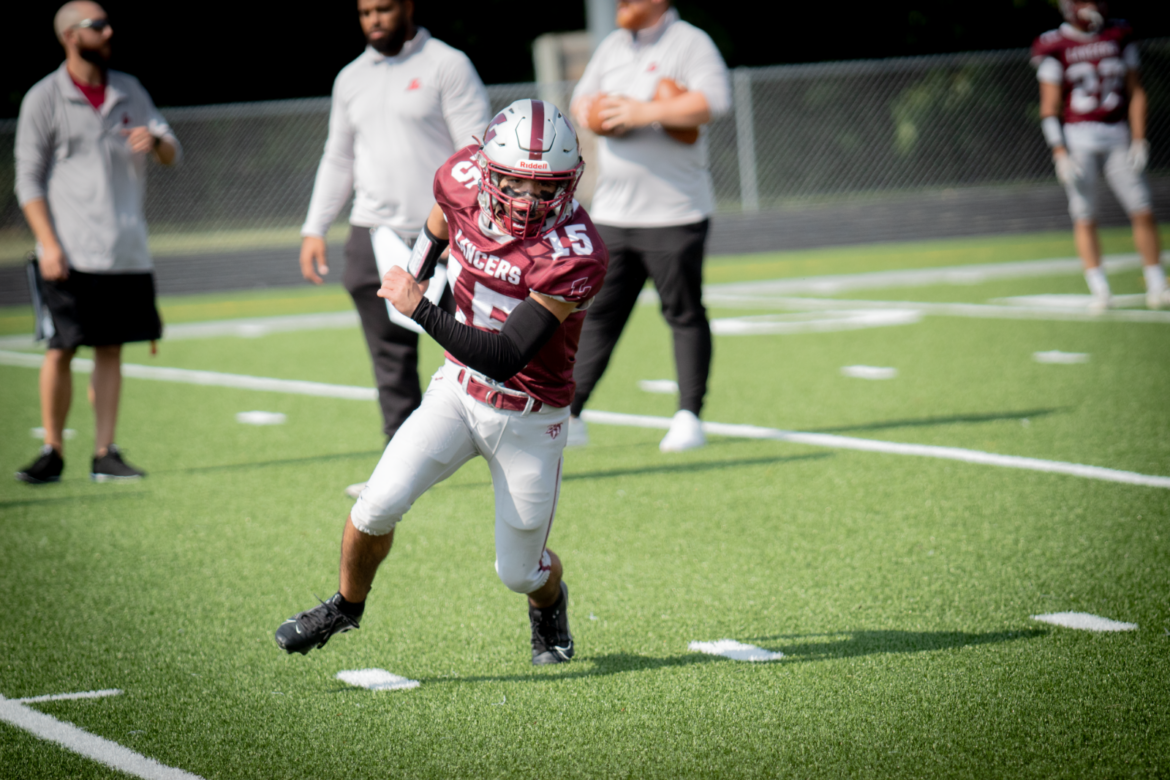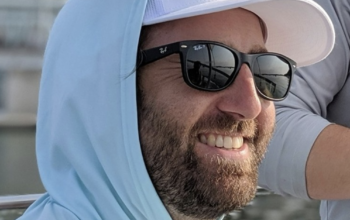Teenage athletes are often thought to be temperamental, snippy or moody.
But after working in the Neuroscience Intensive Care Unit at UW Health, nurse Kelsey Turner knows that these symptoms often mean more than meets the eye. They can be a trigger for something more: a concussion.
“I got my concussions during volleyball,” Turner said. “I would just kind of throw myself around everywhere. I would smack my head on the floor a few times, or get hit in the head with a ball. I never took them as seriously as I probably should have because all of the research behind concussions and stuff wasn’t necessarily out, or was big news when I was getting them.”
Concussions are a frequent topic of conversation in sports, and in light of recent high-profile NFL cases, including that of Dolphins quarterback Tua Tagovailoa, who suffered two documented concussions in the 2022 season, sports-related head injuries have also become an important discussion in many households. Wisconsin’s current concussion protocol is 13 years old, and concussion reports are on the rise.

The Wisconsin State Concussion Law, passed in 2011, “mandates the distribution of preseason educational information sheets to be signed by coaches, athletes and parents. It also recommends immediate removal of any athlete with a suspected concussion and no same-day return to play,” according to the Wisconsin Interscholastic Athletic Association’s website.
The Madison Metropolitan School District and the WIAA have made it their mission in the last decade to better recognize and report concussions in youth sports.
Once it became law, MMSD decided to make safety its top priority in athletics. Dr. Traci Snedden, whose research at UW–Madison focuses on adolescent concussions, worked with MMSD to write the district’s first concussion policy.
“That policy still exists at MMSD and serves as their resource from the time of acute injury,” Snedden said. “It may be sport-related or on the playground, and the [policy] goes through the classroom, the hallway, and all the way through to supporting them with medical care, and educational support. They’ve been extremely progressive and extremely welcoming of studies that are surrounding concussions and trying to be progressive about what they have for students.”
While concussion rates still seem to be on the rise, it’s clear this is at least partly because people are more often reporting them, something that used to be a rarity in youth sports. The recognition of concussions has become more frequent, and districts like Madison are making an effort to always err on the side of caution.
“Now it’s reached equilibrium where people are very aware of it. And we’re definitely communicating well about it, and maybe even being more on the precautionary side, in terms of walking people through protocols,” said MMSD Athletic Director Jeremy Schlitz. “I think initially, it was kind of that mandated step of the return-to-play protocol happening. There was a little bit of a pushback or misunderstanding of why we were doing it. But now that it’s become such a forward-facing piece, everybody knows what to expect.”
Though reports have gone up in recent years, some recent changes to college athletics have directly impacted how adolescents play their sports. While students used to not report concussions to maintain their scholarships to play on college teams, the reasons young athletes do not want to sit out of games have only grown. Snedden pointed to new rules allowing college athletes to benefit from name, image and likeness licensing.
“When parents, families and youth athletes themselves, are seeing the potential that’s available for them in the name, image and likeness business right now, they are a little more cautious about reporting any injuries,” Snedden said. “They see their future in a certain way and they don’t want that to be at risk whatsoever. So we’ve got a long way to go.”
One way MMSD is making progress is by collaborating with UW Health to have athletic trainers as an available resource for their students. Students with any injuries after the school day can go in and be evaluated on-site. Schiltz said students use this resource to their advantage, meaning the schedule is often packed for the trainers. These trainers are also in attendance at all games, including WIAA playoff games.
Still, “Are sports a safe place for our youth?” is the question many parents continue to ask. While the answer is different for each child and each sport, MMSD encourages kids to get out and get active. Schlitz said the district feels its six-step protocol for concussions will keep these athletes safe and healthy.
“Engaging in youth sports and almost any recreational activity involves some risk of injury. But in the context of safe play, knowledge of evidence-based training that reduces risk, and the understanding of recognition and removal, youth sports are an excellent component of childhood,” Snedden said. “You’re still representing your community, you grow your communication skills, you’re growing your self-confidence and friendships, and that has a significant impact on mental health.”






